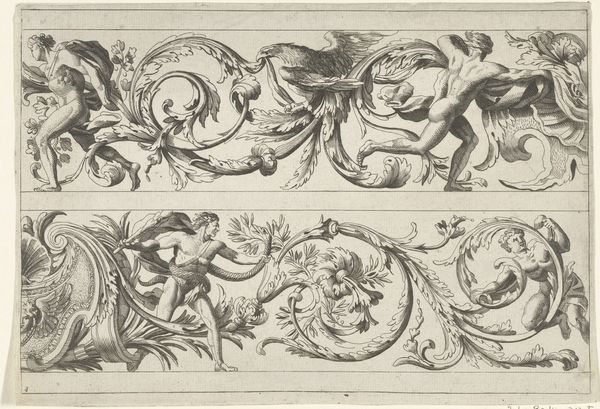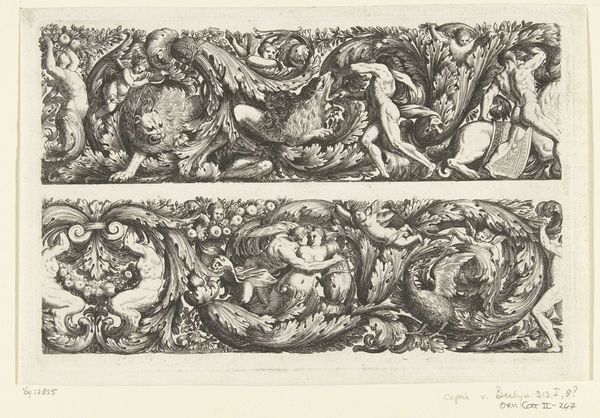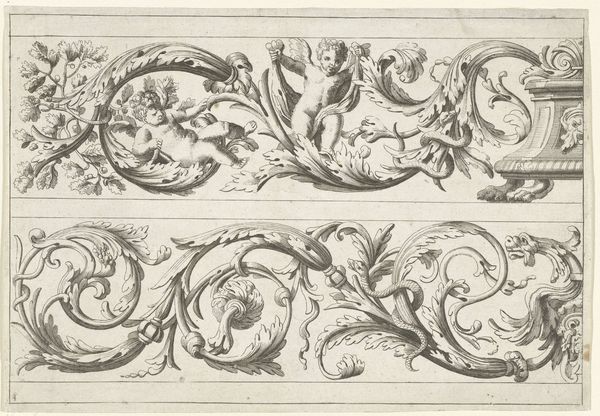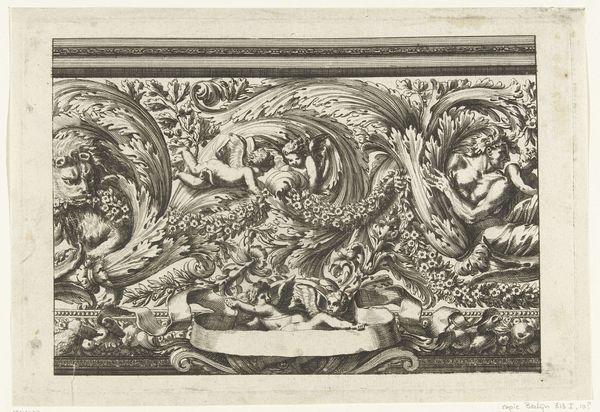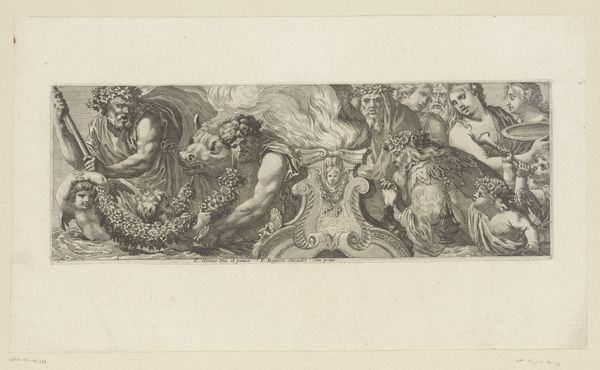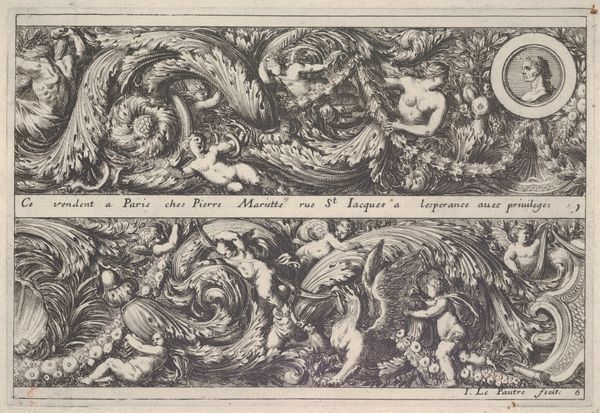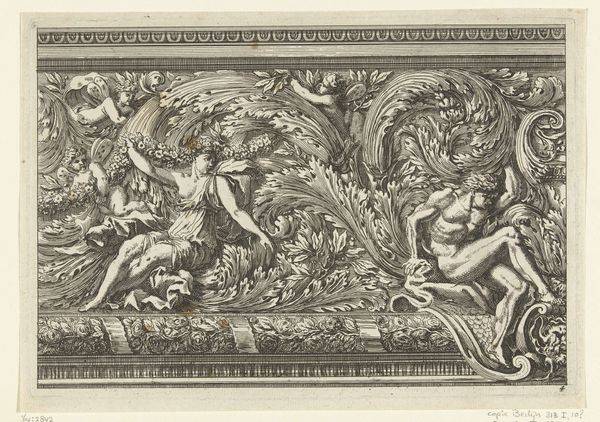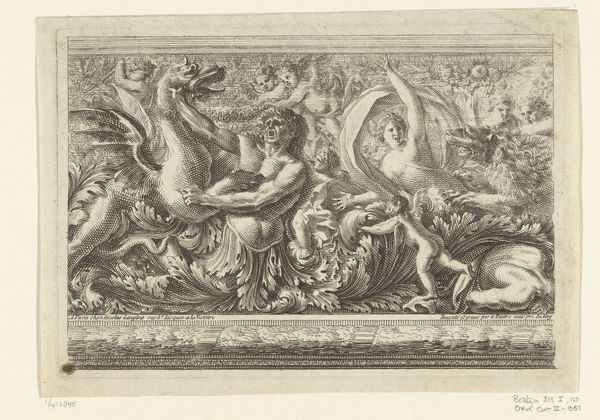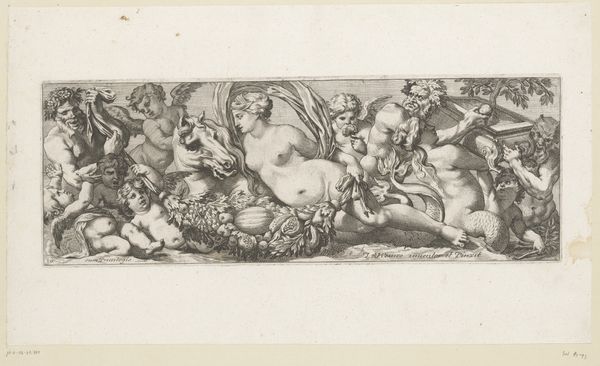
Two Designs for Friezes with Acanthus Scrolls from: Frises, Feuillages ou Tritons Marins à la romaine 1635 - 1645
0:00
0:00
drawing, print, engraving
#
drawing
#
baroque
#
pen drawing
# print
#
figuration
#
history-painting
#
engraving
Dimensions: sheet: 6 7/16 x 9 1/4 in. (16.3 x 23.5 cm) plate: 5 13/16 x 8 11/16 in. (14.8 x 22 cm)
Copyright: Public Domain
Curator: Here we have "Two Designs for Friezes with Acanthus Scrolls from: Frises, Feuillages ou Tritons Marins à la romaine", an engraving by Jean Le Pautre, created between 1635 and 1645. Look at how densely packed the composition is. Editor: It feels like an explosion of foliage and bodies! Almost overwhelming, with the contrast of the swirling acanthus leaves against the more defined figures. Is it meant to feel so frenetic? Curator: The density speaks to the Baroque aesthetic—an embrace of ornamentation and dynamism meant to impress. These prints served as inspiration for artisans and architects. The title itself suggests multiple possibilities—friezes with foliage, or even with Tritons, a hybrid human and sea creature from classical mythology. Editor: Right, I notice these muscular figures interspersed within what appear to be garlands of flowers and swirling vegetation. It feels almost performative, this display of idealized bodies intertwined with elements of nature. Are they simply decorative or trying to communicate specific themes? Curator: It's highly likely that classical motifs allude to power, wealth and authority. Friezes such as these were often found in palaces and grand houses; signaling sophistication. The "à la romaine" aspect emphasizes the Roman influence prevalent during the Baroque era. Editor: So, an assertion of status and cultural legitimacy through visual language. Knowing it’s an engraving also highlights the political economy of art; these designs allowed for the dissemination of the Baroque aesthetic. Accessible opulence, if you will. Curator: Precisely. Printmaking played a significant role in disseminating artistic ideas and trends. Le Pautre was instrumental in shaping French decorative style. These images also helped propagate the dominant socio-political ideology by associating it with grandeur and tradition. Editor: Looking closer at the bottom design with the seated portrait, framed in the wreath; that really speaks to this idealization. There is a construction of power; visually reinforced through classical imagery, meant for display. Curator: An efficient little package that carries both cultural aspiration and a commercial imperative. Editor: Seeing this artwork today, allows us to see how the past, these carefully constructed symbols and aspirational aesthetics are made real within a historical context of inequality. Curator: Absolutely. It serves as a powerful reminder of the political function of art and its capacity to reflect the dominant social narratives of its time.
Comments
No comments
Be the first to comment and join the conversation on the ultimate creative platform.
